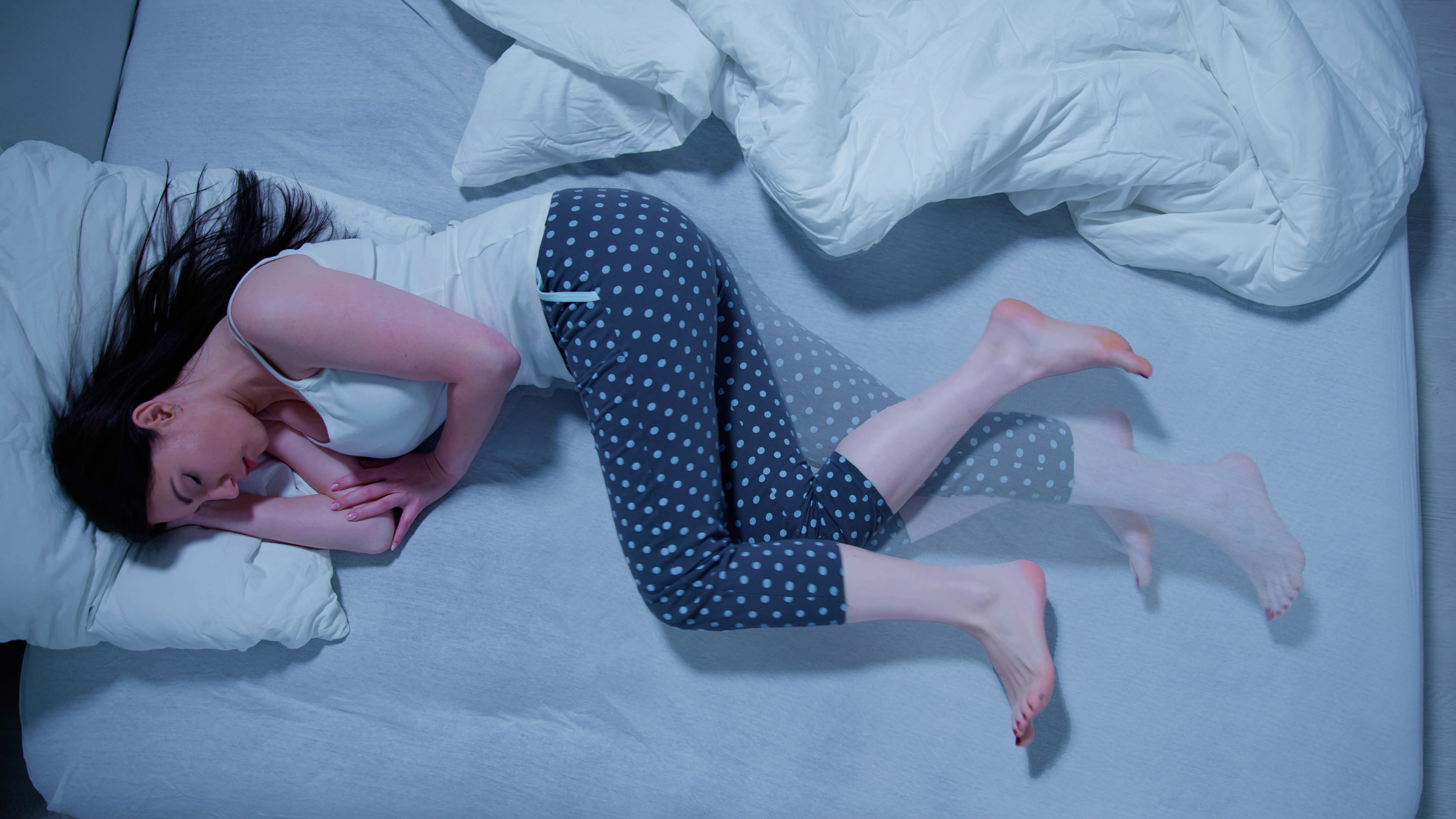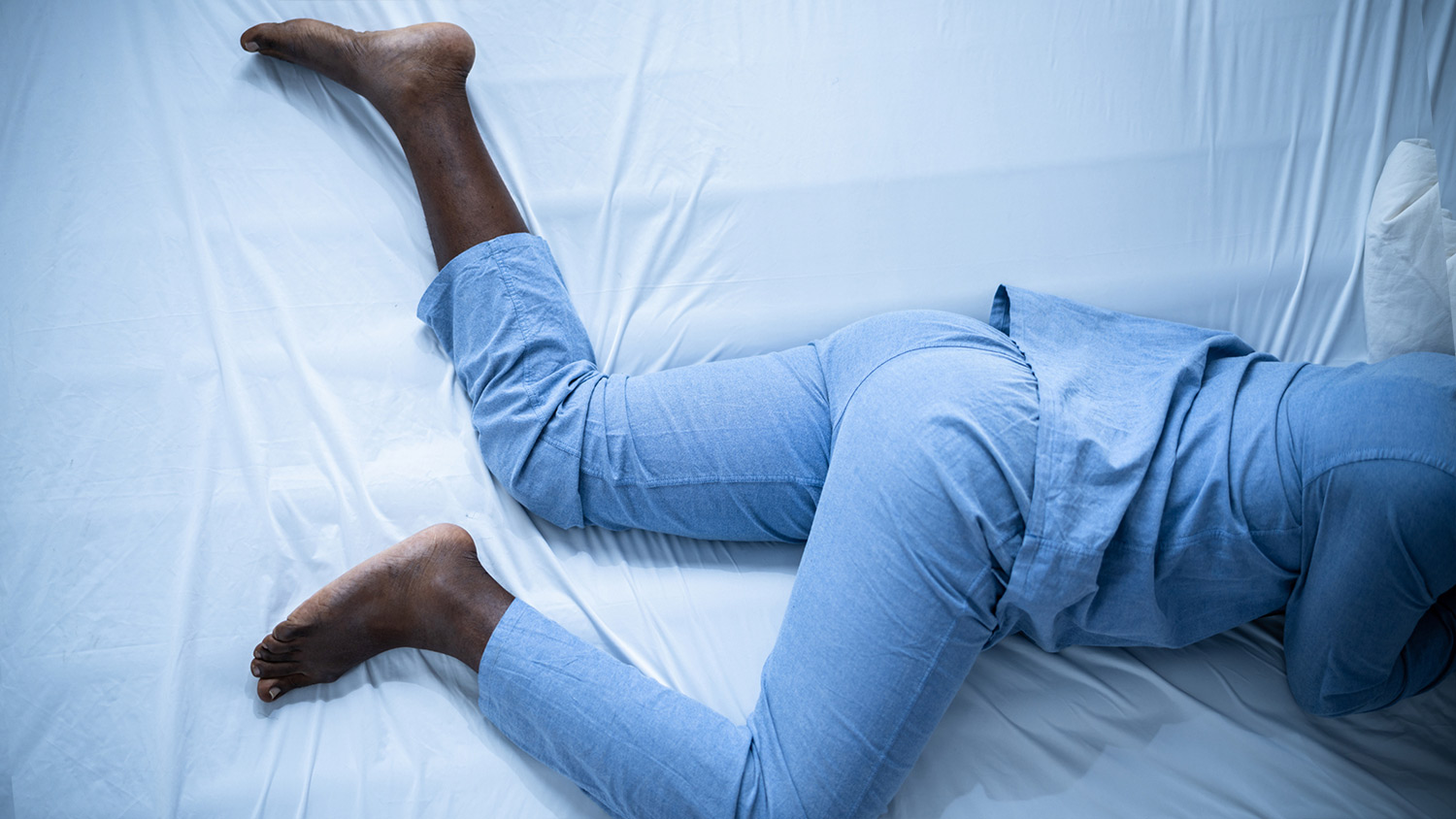What is restless legs syndrome? We asked a sleep expert for their insights
Is restless legs syndrome ruining your sleep? An expert explains how to manage and live with it

Restless legs syndrome (RLS), also known as Willis-Ekbom disease, causes an overwhelming urge to move and stop uncomfortable or strange sensations. It affects around 10% of the adult population in both the UK and US, with a smaller percentage of children also suffering. Those living with RLS can also experience varying degrees of pain and discomfort and symptoms can range from minor annoyances to significant impairments in quality of life.
RLS is usually at its worst in the evening and at night, meaning it can disrupt sleep and leave sufferers with daytime fatigue. Creating the right bedroom environment can play a part in helping sufferers to relax, so make sure you invest in the best mattress and best pillow for your sleeping style.
What is restless legs syndrome?
RLS is a neurological condition that causes sufferers to feel an irresistible urge to move in order to stop uncomfortable or odd sensations. From the name, you might presume that RLS only affects the legs but in fact it can also affect the arms, torso, head and other parts of the body. RLS symptoms often begin when people go to bed, meaning sufferers often struggle to sleep and suffer with tiredness during the day. As we all know, a lack of sleep can have huge repercussions on health and can seriously impact a person’s quality of life. RLS is also classified as a sleep disorder because of this.
RLS-UK, the charity dedicated to helping sufferers explains that there are two recognised forms of RLS. “Primary or idiopathic RLS has no known cause and usually begins slowly, before approximately 40–45 years of age. It is often genetically linked and it is likely that another family member may also share the condition. Primary RLS can come and go, sometimes for months on end, and is often progressive, meaning it gets worse with age.
"Secondary RLS often has a sudden onset and is usually associated with another medical condition (e.g. iron deficiency anaemia) or the use of certain drugs. Some medications, such as the antihistamines in cold and allergy remedies, make the symptoms worse for some people.”
RLS can start at any age, can be progressive in some and affects men and women. Symptoms gradually worsen in around two-thirds of sufferers, with the condition being severe enough to be disabling for some. Yet, RLS is often misunderstood and dismissed, leading some sufferers to feel isolated and alone with their condition.
Symptoms of restless legs syndrome
RLS can be hard to diagnose, but these symptoms generally suggest a patient has the syndrome:
Get daily insight, inspiration and deals in your inbox
Sign up for breaking news, reviews, opinion, top tech deals, and more.
- Needing to move the legs, usually accompanied by uncomfortable sensations. Sufferers use a variety of terms to describe these sensations, such as tingling, burning, aching, tugging, itching, throbbing and even liken it to having insects crawling inside the legs. Other body parts can be involved beside the legs and the urge to move can be there without the sensations.
- Symptoms are generally worse or only occur in the evening or night.
- Symptoms cannot solely be accounted for by another condition such as leg cramps, arthritis, leg swelling or sitting in a bad position.
- Symptoms are worse or only occur during periods of rest or inactivity (lying and sitting).
- Symptoms are partly or wholly relieved by movement or stretching, but only for as long as the movement continues.
What causes restless legs syndrome?

RLS can be caused by other medical conditions, but the cause is generally unknown. There may be a genetic component, with between 40% and 90% of patients having a direct relative with the condition.
“In most cases, restless legs syndrome (RLS) has no obvious cause, explains Dr Neel Patel, GP and doctor for Lloyds Pharmacy Online. “Some studies suggest dopamine, the ‘feel good’ hormone, is involved. In some cases, RLS can be caused by an underlying health condition like iron deficiency anaemia or kidney failure.”
Restless legs syndrome and pregnancy
“There is a link between RLS and pregnancy with around 1 in 5 experiencing symptoms in their last trimester”, explains Dr Patel. “It’s not clear why this is and symptoms usually disappear when the baby has been born.”
RLS-UK suggests that RLS in pregnancy could be related to iron or folate deficiency, hormonal changes and a rise in oestrogen or circulatory changes. But these are just theories. Unfortunately, most drugs typically used to treat RLS have not been studied in pregnant women, meaning those suffering can experience a poorer quality of life. Pregnant women should talk to their doctor about taking potential supplements, whilst others find it helpful to get a massage, use hot or cold packs or take a warm bath.
Is restless legs syndrome dangerous?
“RLS is not life-threatening and in the majority of cases, the symptoms will disappear if the underlying cause is addressed”, says Dr Patel. “Severe RLS, on the other hand, can affect quality of life and trigger mental health issues, such as anxiety and depression.”
This is why it’s important to manage your symptoms and seek advice from a doctor if your condition worsens.
Restless legs syndrome treatment options
“Mild cases of RLS can often be addressed through lifestyle changes, such as exercising regularly, quitting smoking and prioritising good sleep through avoiding alcohol and caffeine late at night and sticking to a regular sleep schedule”, says Dr Patel.
RLS-UK also recommends the following:
- Create a relaxing bedroom environment and maintain a routine in the time you go to bed and get up. You can also try sleeping with a pillow between your legs, which may prevent nerves in your legs from compressing.
- Exercise in moderation, ensure you sit comfortably with your feet on the floor and, when travelling, make sure you get up and move around regularly to stretch.
- Use hot-cold contrast therapy. Two-three hours before bed, try a five-minute shower with 20 seconds of cold water followed by 10 seconds of warm. Finish this with a few minutes under the warm water to relax your nervous system and increase blood flow to your legs.
- Avoid eating late at night and, if you have to, avoid stimulating or strong foods. Avoid alcohol, caffeine and nicotine completely or at least for a few hours before bed.
- Eat foods rich in folic acid, such as spinach and kale, and ask your doctor to check your iron, vitamin B, folic acid and calcium levels to see if supplements could help. Some sufferers find a magnesium oil spray used on the legs can be beneficial.
“In more severe cases, your doctor might prescribe medication to regulate the levels of dopamine and iron in your body”, explains Dr Patel.

Dr Neel Patel completed his medical training at St Bartholomew's and the Royal London Medical School, completing his GP training in Berkshire. He joined LloydsPharmacy Online Doctor in 2020 and also works as a GP in Hertfordshire.
Jo Plumridge is a freelance writer and photographer with over 20 years of experience writing for a variety of magazines, books and websites. She writes, perhaps unsurprisingly, about photography but also extensively on all things sleep and interior design related, alongside home and tech product reviews. She’s lived in the middle of a nature reserve in Botswana and written a guidebook to New Zealand, but now spends a lot of time trying to photograph the cats she and her husband foster for a local charity - without a doubt the most challenging subjects on earth!
